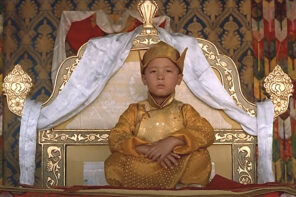“Do bacteria require light?” Tashi, one of my best students, wants to know. He sits there in Dharamsala, India, like his Buddhist monk colleagues, cross-legged on the floor in maroon robes, six hours a day learning science from a tall white Jewish guy from North Carolina.
Religion often has a hard time of it, especially among academics, and especially among scientists. Of course academics have no problem studying religion and raising big money to establish endowed chairs, centers, and institutes devoted to just that. But actually being religious or even discussing personal beliefs or spirituality at all, is rare and, if anything, discouraged. To me this is an odd and disturbing social conundrum: let’s take our best thinkers and idea-people, theorizers, and policy developers and eradicate any discussion of personal belief, religion, or spirituality from their official discourse. Brilliant.
So, it’s refreshing to be part of a project [see the New York Times article in yesterday’s Science section], an experiment really, in which academics are actively engaging religious tradition and belief. Even better, and ironically, this engagement is driven by scientists; the very folks many blame for hammering personal belief out of intellectual conversation in the West in the first place.
Several years ago, His Holiness the Dalai Lama requested that Emory University educators develop a modern science curriculum to eventually become part of the regular centuries-old curriculum of all Tibetan Buddhist monks in India. Since the Dalai Lama was forced from China in 1959, India has graciously hosted him, the Tibetan government in exile, and thousands of Tibetans, including many monastics in new monasteries and nunneries. Unlike for Westerners, it is relatively common for Tibetans to become monks (even today, 1 in 10 Tibetans do).
We just completed our second year of a five-year pilot with 91 monks and nuns. The project is designed for monks and nuns to learn science and for us to learn Buddhism and Tibetan culture, but also for us to simultaneously build the capacity for the Tibetans eventually to take over the science teaching and learning.
If you’re like many of my administrators and colleagues, you might be asking, “What?! Beyond the coolness factor, what in the world is the point of teaching science to a bunch of monks halfway around the world?”
Can you say ‘globalization,’ ‘religion,’ ‘science and technology’?
Whether we like it or not, the world is becoming flatter by the day. This could be a disaster or, if we aggressively develop models to address the world’s complex problems—environmental degradation, racism, poverty—through profound cultural exchange and integration, this could be a boon. A vast majority of this globalizing world (including 100 million Americans) is deeply grounded in religious belief, and many of them have worldviews lacking any stark separation of spirituality from science.
How do we integrate, and not reject, belittle, or ignore religion and the religious, moving toward developing approaches and potential solutions to our most profound problems? And, finally then, as all of us are participants in this grand and inexorable globalization experiment, there is that most challenging and central question for all educators and learners: how do we most effectively teach and learn across cultural and intellectual gaps?
In its own small way, our project is a model and provides a laboratory for addressing these big questions. The components are there for a good experiment: a religious leader and a religion, Tibetan Buddhism, unusually open to discussion and integration (see my other RD column on this), science educators eager to teach and learn, and all open to the opportunity for new ideas and knowledge to emerge.
Take Tashi’s question about bacteria and light. We’d spent the whole week teaching the monks and nuns cellular and molecular biology around the question: Can bacteria sense? The question is unresolved and not trivial among Buddhists, because if bacteria are sentient beings, they should not be killed and would be reincarnated beings. So, you see the implications.
“Yes,” I answered, “Some bacteria require light and use it to make energy via photosynthesis.” Tashi’s was a typically insightful question from the monks, and also typical in its ‘double-meaning’ nature: I was thinking this was a great science question, integrating much of our discussion; but when I asked Tashi why he asked the question, he said it was because in the Buddhist view, consciousness requires light. So, if bacteria are sentient and therefore conscious, they would require light. See what I mean by double meaning and cultural interchange?
Religion is rich and valuable; science also has much to offer. Being human constructs, both of course have their failings and limitations, but both have given much and can give more. Dhondup, another of the monk students, had this pearl to offer when I asked him why he was participating in our science project, a statement that turned my worldview on its head and sums up how such cultural exchanges might just make a difference: “I am studying modern science because I believe it can help me understand my Buddhism better.”




